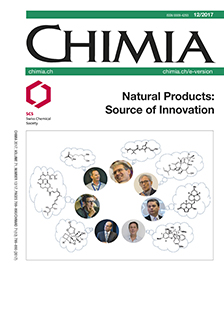Investigating the Structure–Activity Relationship of the Insecticidal Natural Product Rocaglamide
DOI:
https://doi.org/10.2533/chimia.2017.845Keywords:
Insecticide, Rocaglamide, Structure–activity relationshipAbstract
The natural product Rocaglamide (1), isolated from the tree Aglaia elliptifolia, is a compelling but also challenging lead structure for crop protection. In laboratory assays, the natural product shows highly interesting insecticidal activity against chewing pests and beetles, but also phytotoxicity on some crop plants. Multi-step syntheses with control of stereochemistry were required to probe the structure–activity relationship (SAR), and seek simplified analogues. After a significant research effort, just two areas of the molecule were identified which allow modification whilst maintaining activity, as will be highlighted in this paper.Downloads
Published
2017-12-01
How to Cite
[1]
R. G. Hall, I. Bruce, N. G. Cooke, L. J. Diorazio, F. Cederbaum, M. R. Dobler, E. Irving, Chimia 2017, 71, 845, DOI: 10.2533/chimia.2017.845.
Issue
Section
Scientific Articles
License
Copyright (c) 2017 Swiss Chemical Society

This work is licensed under a Creative Commons Attribution-NonCommercial 4.0 International License.







